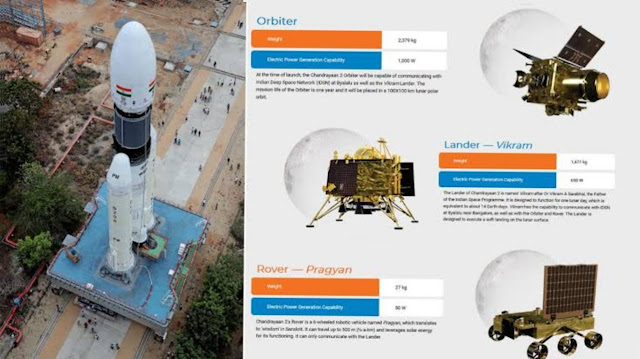India's Remarkable Lunar Mission Chandrayaan-2 [ The Failure ]
Chandrayaan-2: India's Remarkable Lunar Mission
 |
| Chandrayan-2 |
Introduction:
Not only Indians but also Most of the people in every country knew about Chandrayaan-2. It is India's second lunar exploration mission, stands as a testament to the nation's burgeoning space capabilities. Launched by the Indian Space Research Organisation (ISRO), this ambitious project aimed to further our understanding of the Moon and solidify India's position in the global space exploration arena. People knew that what are the things that Chandrayaan-2 discovered even it was a failure. In this article, we delve into the key aspects of Chandrayaan-2, from its inception to groundbreaking discoveries.
Chandrayaan-2 Mission Overview
1. Launch and Objectives:
Chandrayaan-2 blasted off on July 22, 2019, atop a GSLV Mk III rocket, marking a significant milestone in India's space endeavors. The primary objectives of the mission included studying lunar topography, mineral composition, exosphere, and searching for water ice on the Moon.
2. Orbiter, Lander, and Rover:
 |
| Orbiter, Lander and Rover of Chandrayan-2 |
The spacecraft consisted of three integral components - the Orbiter, Vikram Lander, and Pragyan Rover. The Orbiter, equipped with advanced instruments, orbited the Moon, while the Lander aimed to make a soft landing near the lunar south pole. The Rover, Pragyan, was designed to explore the lunar surface, conducting experiments and transmitting crucial data.
Mission Challenges and Triumphs
1. Lander Vikram's Challenges:
Despite meticulous planning, the mission faced a setback during the final descent of Lander Vikram. The communication with the lander was lost momentarily, leading to concerns about mission success. However, the ISRO team displayed resilience and continued the mission with the Orbiter and Rover.
2. Orbiter's Success:
While Vikram's setback was disheartening, the Chandrayaan-2 Orbiter continued to function exceptionally well. It captured high-resolution images and made significant discoveries, contributing valuable data for lunar research.
Scientific Discoveries and Contributions
 |
| Scientific Discoveries of Chandrayan-2 |
1. Water Molecules on the Moon:
One of Chandrayaan-2's groundbreaking discoveries was the detection of water molecules on the lunar surface. This finding holds immense significance for future lunar exploration and potential human colonization efforts.
2. Mapping Lunar Topography:
The mission meticulously mapped the Moon's surface, providing scientists with detailed information about its topography. This data has broad implications for understanding the Moon's geological history and its potential resources.
Future Implications and Collaborations
1. Chandrayaan-3 and Beyond:
Despite the challenges faced during Chandrayaan-2, ISRO remains undeterred in its lunar exploration pursuits. The proposed Chandrayaan-3 mission aims to build upon the successes and lessons learned from its predecessor, showcasing India's commitment to advancing space exploration.
2. International Collaborations:
Chandrayaan-2 fostered collaboration with international space agencies, opening avenues for shared knowledge and resources. The mission demonstrated India's willingness to engage in global scientific efforts, paving the way for future cooperative space endeavors.
Conclusion:
Chandrayaan-2 stands as a beacon of India's prowess in space exploration, showcasing technological advancements and scientific achievements. Despite the challenges faced, the mission contributed significantly to our understanding of the Moon and laid the groundwork for future lunar exploration endeavors. As India looks towards the stars, Chandrayaan-2 remains a testament to the nation's indomitable spirit in the pursuit of knowledge beyond our earthly boundaries.
Thank you for reading. ❤


